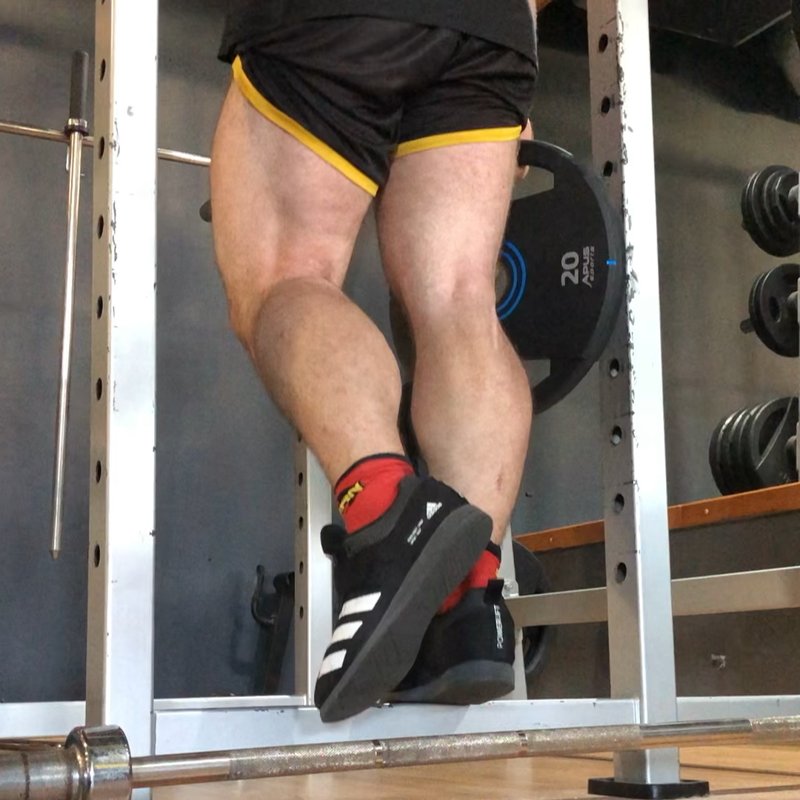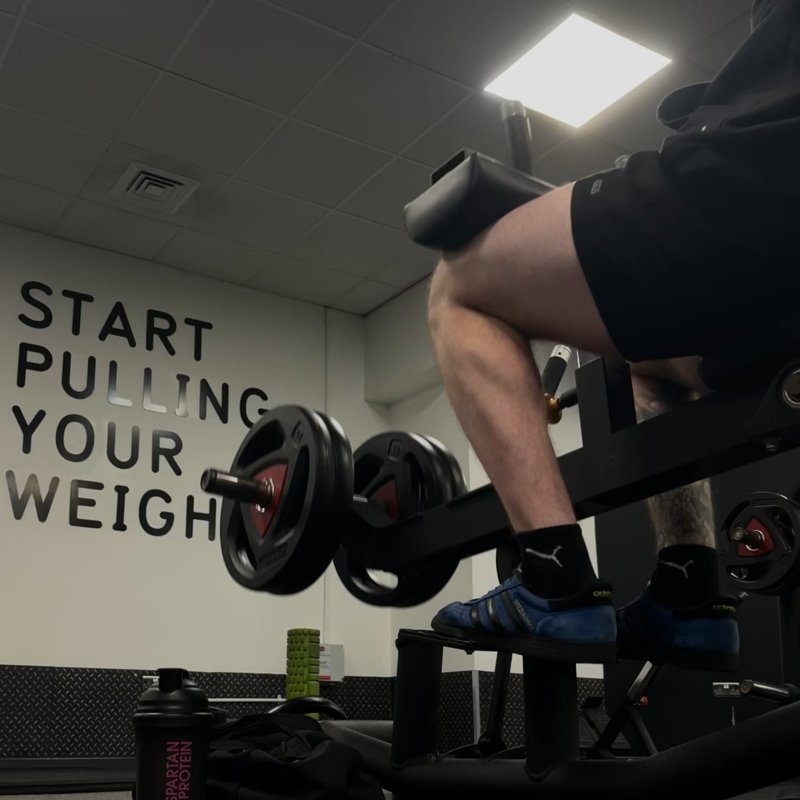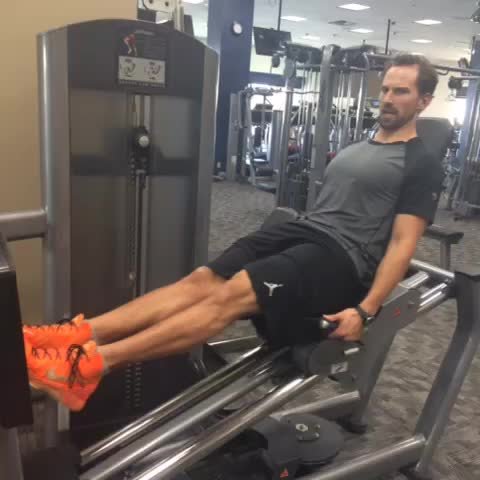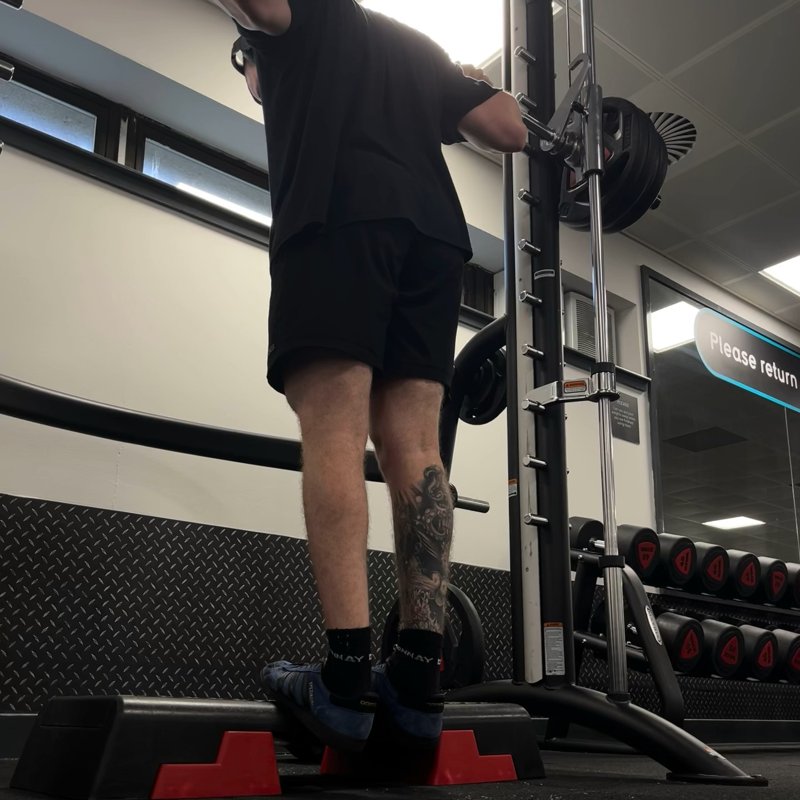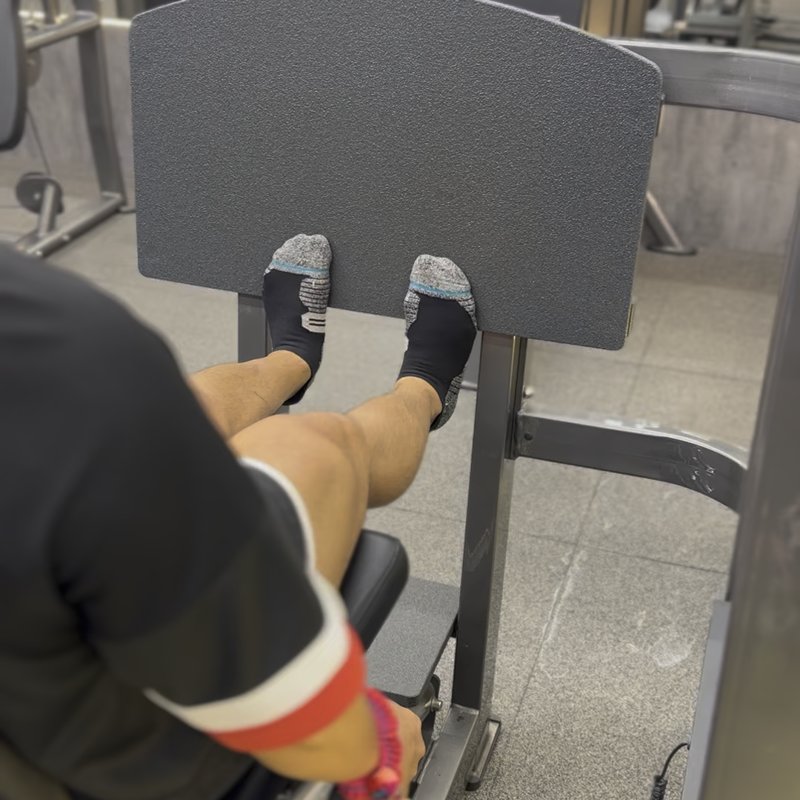Calf Press On Leg Press: The Ultimate Guide
The Calf Press On Leg Press is a compound lower body exercise that primarily targets the gastrocnemius and soleus muscles using the leg press machine, allowing for heavy loading and controlled movement patterns.
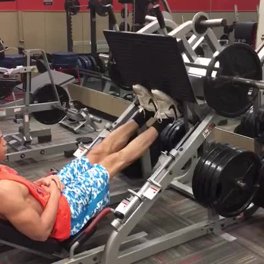
Quick Facts
Key Benefit
Calf size and strength development with significant loading potential
Primary Muscles
Secondary Muscles
Posterior Deltoids
Equipment
machine
Difficulty
Beginner
Type
Strength
In This Guide
Ready to master the Calf Press On Leg Press?
Track your progress, see improvements over time, and build strength consistently.
Download GravitusThe Calf Press On Leg Press is an excellent exercise for developing lower leg strength and size, utilizing equipment you're likely already using in your leg workout. This movement effectively targets the gastrocnemius and soleus muscles—the two primary muscles that make up the calves—through a simple yet effective plantar flexion movement. What makes the calf press particularly valuable is its ability to load the calves with significantly more weight than many other calf exercises. By utilizing the leg press machine, you can safely apply substantial resistance to these often stubborn muscles without the balance requirements or spinal loading associated with standing variations. The exercise offers remarkable versatility, allowing for various foot positions to emphasize different parts of the calf musculature. Additionally, the fixed movement path of the leg press provides stability, enabling you to focus entirely on calf contraction and range of motion rather than balance and coordination. Whether you're looking to increase athletic performance through enhanced lower leg power, build more aesthetic calves, or simply strengthen these muscles for functional movement, the calf press on leg press delivers targeted stimulation in a controlled environment that works for beginners and advanced lifters alike.
Benefits of Calf Press On Leg Press
The calf press on leg press offers several distinct advantages that make it a valuable addition to your lower body training regimen.
Heavy Loading Capacity
The leg press machine allows you to safely apply substantial resistance to the calves, often much more than is possible with standing calf raises.
Reduced Lower Back Stress
Unlike standing calf exercises, the supported position on the leg press removes spinal loading and compression, making it suitable for those with back concerns.
Excellent Range of Motion
The design of most leg press machines allows for a full stretch at the bottom position and complete contraction at the top, optimizing calf development.
Isolation with Stability
The fixed movement path eliminates balance requirements, allowing you to focus entirely on calf muscle activation and control.
Versatile Foot Positioning
Simply changing foot placement on the platform can shift emphasis between different parts of the calf musculature for comprehensive development.
Proper Form & Technique
Setup
- Set up on the leg press machine as you would for a standard leg press, adjusting the seat position to allow for a full range of motion.
- Place your feet on the lower portion of the platform with only the balls of your feet and toes in contact with the surface.
- Position your feet about hip-width apart, with toes pointing forward or slightly outward.
- Release the safety stops and lower the platform until your knees are extended (but not locked) and your ankles are in a stretched position.
- Ensure your lower back maintains contact with the seat back throughout the setup and movement.
- Grasp the handles or sides of the seat for stability during the exercise.
Movement
- Begin with your ankles stretched in a dorsiflexed position (toes pointing toward your shins) to feel a stretch in your calf muscles.
- Push through the balls of your feet, extending your ankles to lift the weight (plantar flexion).
- Continue the movement until your calves are fully contracted, rising as high as possible on your toes.
- Hold the contracted position briefly at the top, focusing on squeezing your calf muscles.
- Slowly lower the weight by allowing your ankles to flex, returning to the starting stretched position.
- Control the descent phase to maximize the stretch and eccentric stimulus to the calf muscles.
- Repeat for the desired number of repetitions while maintaining controlled movement throughout.
Key Form Tips
Range of Motion
Lower your heels as far as comfortably possible to get a full stretch, then rise as high as you can on your toes for complete contraction.
Controlled Movement
Avoid bouncing or using momentum - aim for a 2-second lift and 3-second lowering phase for optimal muscle engagement.
Foot Position
Keep the balls of your feet firmly planted on the platform throughout the entire movement.
Focus
Concentrate on feeling the contraction in your calf muscles rather than just moving the weight.
Variation
Occasionally change foot placement (wider, narrower, toes in, toes out) to target different areas of the calf muscles.
Muscles Worked
Primary Muscles
- gastrocnemius: The larger, two-headed muscle that forms the prominent bulge on the back of the lower leg, primarily responsible for plantar flexion when the knee is extended.
- soleus: The flat muscle located beneath the gastrocnemius that contributes significantly to plantar flexion, particularly when the knee is bent.
Secondary Muscles
- plantaris: A small muscle that works alongside the gastrocnemius, providing minor assistance during plantar flexion movements.
- posterior deltoids: A deep muscle that helps stabilize the ankle during the movement and assists with plantar flexion.
- flexor hallucis longus: A muscle that flexes the big toe and assists with ankle plantar flexion, receiving moderate activation during calf presses.
- flexor digitorum longus: A muscle that flexes the smaller toes and provides secondary assistance during plantar flexion movements.
Common Mistakes and How to Fix Them
Insufficient Range of Motion
Not lowering heels far enough or not rising fully onto toes limits muscle development. Focus on achieving a full stretch at the bottom position (heels well below the level of your toes) and a complete contraction at the top (rising as high as possible on your toes). If mobility is limiting your range, incorporate regular calf stretching into your routine and gradually work to increase your functional range over time.
Using Momentum
Bouncing or using momentum at the bottom position reduces effectiveness and increases injury risk. Control the movement throughout the entire range of motion, especially during the lowering phase. Implement a deliberate tempo—for example, 2 seconds up, 1-second pause at the top, and 3 seconds down—to eliminate momentum and maximize muscle tension. Consider reducing the weight if necessary to maintain proper control.
Improper Foot Placement
Placing feet too high or too low on the platform compromises the exercise's effectiveness. Position the balls of your feet and toes firmly on the platform with heels free to move through a full range of motion. Ensure your feet remain in consistent contact with the platform throughout the movement, avoiding shifting or sliding that can occur with improper placement or excessive weight.
Short Rest at Bottom
Resting with heels on the platform between repetitions reduces tension and effectiveness. Maintain constant tension by keeping the set continuous without resting at the bottom position. Instead of allowing your heels to fully rest on the platform between reps, touch lightly and immediately begin the next repetition, maintaining muscle engagement throughout the set.
Lifting Heels Off Platform
Allowing heels to lift off the platform during the contraction reduces stability and effectiveness. Keep the balls of your feet firmly planted on the platform throughout the entire movement, focusing on ankle movement rather than sliding your feet. If you notice your feet shifting during the exercise, reduce the weight and focus on proper technique before progressing to heavier loads.
Exercise Variations
Foot Position Variations
-

Toes-Out Calf Press
Positioning feet with toes pointed outward to emphasize the inner head of the gastrocnemius muscle.
-

Toes-In Calf Press
Positioning feet with toes pointed inward to place more emphasis on the outer head of the gastrocnemius muscle.
-

Wide-Stance Calf Press
Placing feet wider than hip-width to distribute the work across different portions of the calf musculature.
-

Narrow Stance Calf Press
Positioning feet closer together to focus the tension on the central portion of the calf muscles.
Loading Variations
-

Single-Leg Calf Press
Performing the exercise with one leg at a time to address potential imbalances and increase the load on each individual calf.
-

High-Rep Calf Press
Using lighter weight for 15-25 repetitions to target slow-twitch muscle fibers and improve muscular endurance.
-

Heavy Calf Press
Utilizing substantially heavier weights for 6-10 repetitions to maximize strength development and target fast-twitch fibers.
Tempo Variations
-

Slow-Eccentric Calf Press
Using a controlled 4-6 second lowering phase to increase time under tension and eccentric stress on the calf muscles.
-

Pulse Calf Press
Performing small, partial-range pulses at the top contracted position to intensify the peak contraction.
-

Isometric Calf Press
Adding a 3-5 second pause at the top contracted position to maximize tension and muscular activation.
Frequently Asked Questions
Most people respond well to training calves 2-3 times per week with at least 48 hours between sessions targeting the same muscle group. The calf press on leg press can be incorporated into your leg days or as part of dedicated calf training sessions. For those with particularly stubborn calves, you might consider increasing frequency to 3-4 times weekly with moderate volume each session. Training approach can also be determined by your calves' recovery capacity—some individuals find their calves recover quickly and can handle more frequent training, while others need more recovery time between intense sessions. A balanced approach might include one heavier, lower-rep session (6-10 reps) and one lighter, higher-rep session (15-20 reps) per week. Monitor how your calves respond to different frequencies and adjust accordingly, looking for the sweet spot between sufficient stimulus and adequate recovery.
Neither exercise is inherently "better" than the other—they have different advantages that make them complementary rather than competitive. Calf presses on the leg press typically allow for greater loading, which can be beneficial for progressive overload and strength development. They also remove spinal loading, making them suitable for those with back issues. Standing calf raises, however, involve more stabilization and may better simulate functional movements like jumping. From a muscle activation perspective, research suggests standing calf raises might provide slightly greater gastrocnemius activation, while seated variations better target the soleus. For optimal development, consider including both types of exercises in your program. Perhaps use the calf press for heavier, strength-focused work and standing calf raises for higher-rep, metabolic stress training. Alternatively, you could rotate between exercises across different training phases to provide novel stimulus and prevent adaptation plateaus.
Calf development can be challenging for several reasons. First, calves often have a high percentage of slow-twitch muscle fibers, which respond better to higher volume and frequency than typical hypertrophy protocols. Second, calves receive frequent low-level activation throughout daily activities like walking, making them resistant to growth from standard training approaches. To overcome these challenges, consider these adjustments: 1) Increase training frequency to 3-4 times weekly with moderate volume each session, 2) Ensure complete range of motion, getting a full stretch at the bottom and complete contraction at the top, 3) Implement a variety of rep ranges, including both heavy, low-rep sets (6-8) and lighter, high-rep sets (15-25), 4) Add intensity techniques like drop sets, rest-pause training, or slow eccentrics, 5) Incorporate both seated and standing calf exercises to target both the gastrocnemius and soleus effectively, 6) Consider your genetics and limb length—some individuals have anatomical limitations to calf development, 7) Ensure adequate nutrition and recovery between training sessions.
The ideal foot position depends on your specific goals and the areas of your calves you want to emphasize. For balanced development, start with feet hip-width apart and toes pointing slightly outward (about 5-10 degrees). This position tends to engage both heads of the gastrocnemius relatively equally. To target the inner head of the gastrocnemius more, turn your toes outward further (15-30 degrees). To emphasize the outer head, position your toes slightly inward. Foot width also matters—a wider stance distributes the work differently than a narrower stance. For comprehensive development, don't limit yourself to one position; instead, periodically rotate between different foot positions either within the same workout (different positions for different sets) or across different training sessions. Most importantly, any foot position should allow for full range of motion and comfortable ankle movement without strain or awkward joint angles. Experiment methodically with different positions while paying attention to muscle activation and comfort to determine your personal optimal approach.
Video Demonstrations
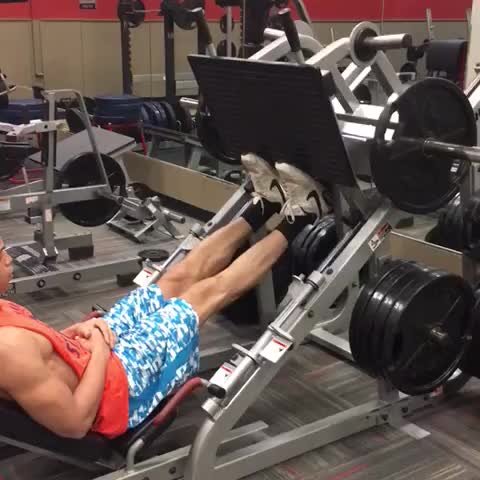
Log in to watch video demonstrations
Login to Watch3 video demonstrations available
Find more video demonstrations in the Gravitus app
Tips from the Community
-

Use a slow tempo, and do not bounce the weight
-

Don’t loose the toes grip on the eccentric phase,keep them intact.
-

Don’t loose the toes grip on the eccentric phase,keep them intact.
-

Don’t do like video, use slow eccentric, pause in the bottom for a 3 count each rep
Track your progress with Gravitus
Download Gravitus to log your workouts, track your progress, and join a community of fitness enthusiasts.

Helpful Resources
One Rep Max Calculator
Find your one rep max for any exercise without maximal testing. Essential for developing effective strength training programs.
Calculate 1RMWorkout Programs
Follow structured workout programs created by fitness professionals to maximize your strength and muscle gains.
View Programs